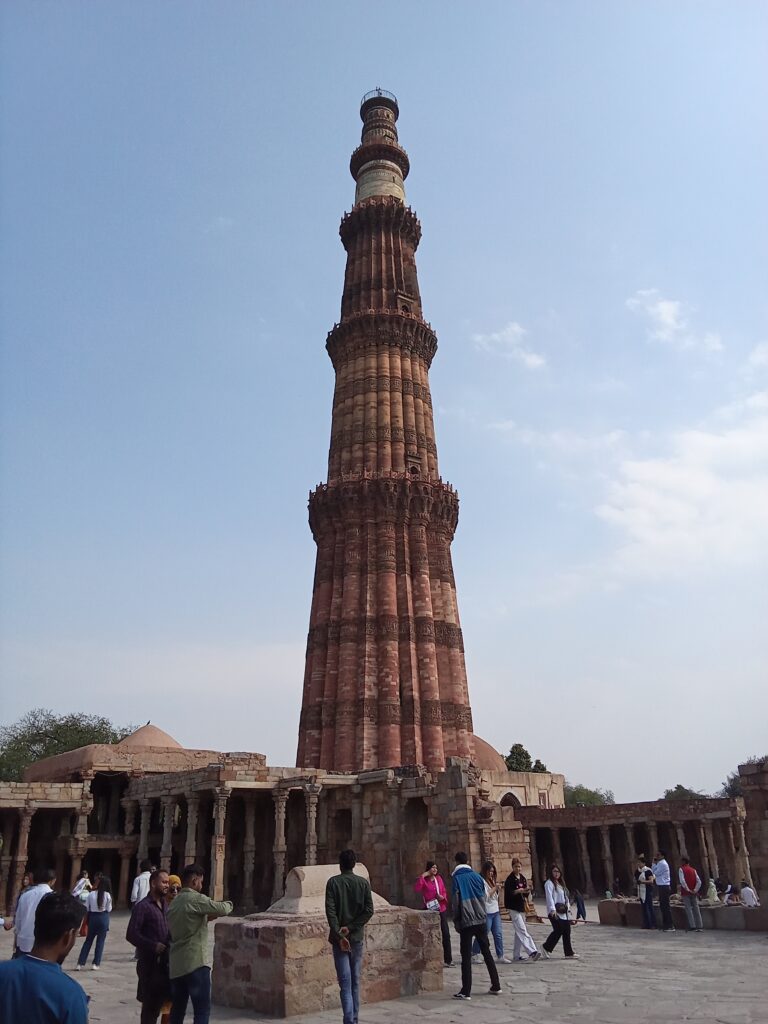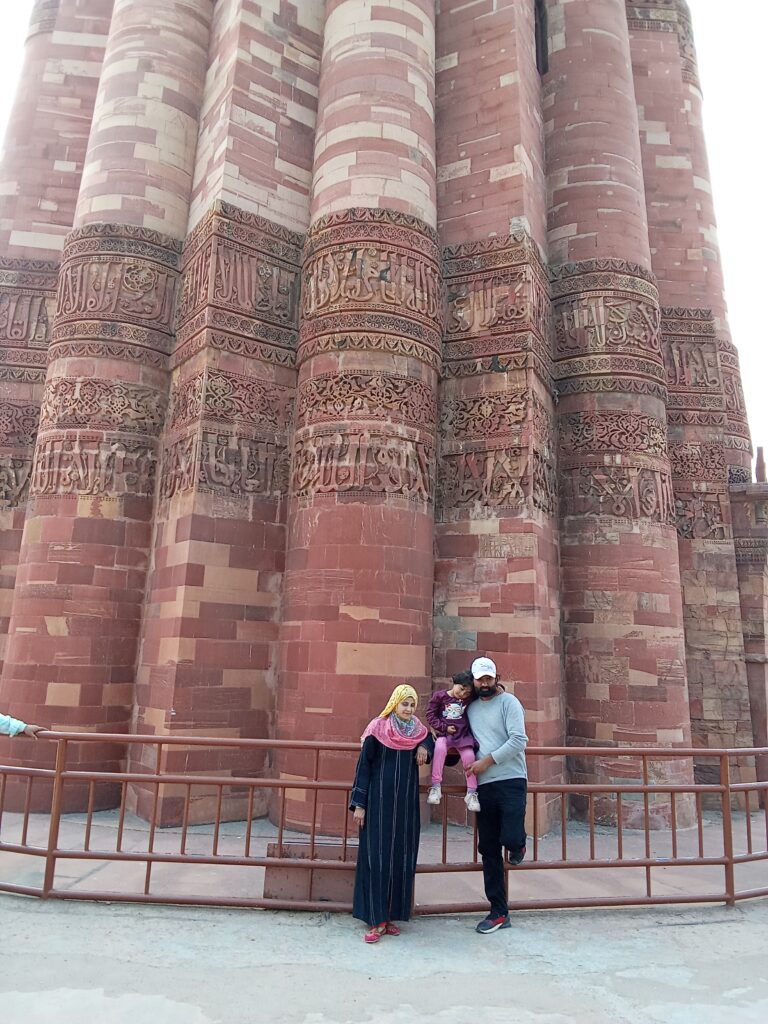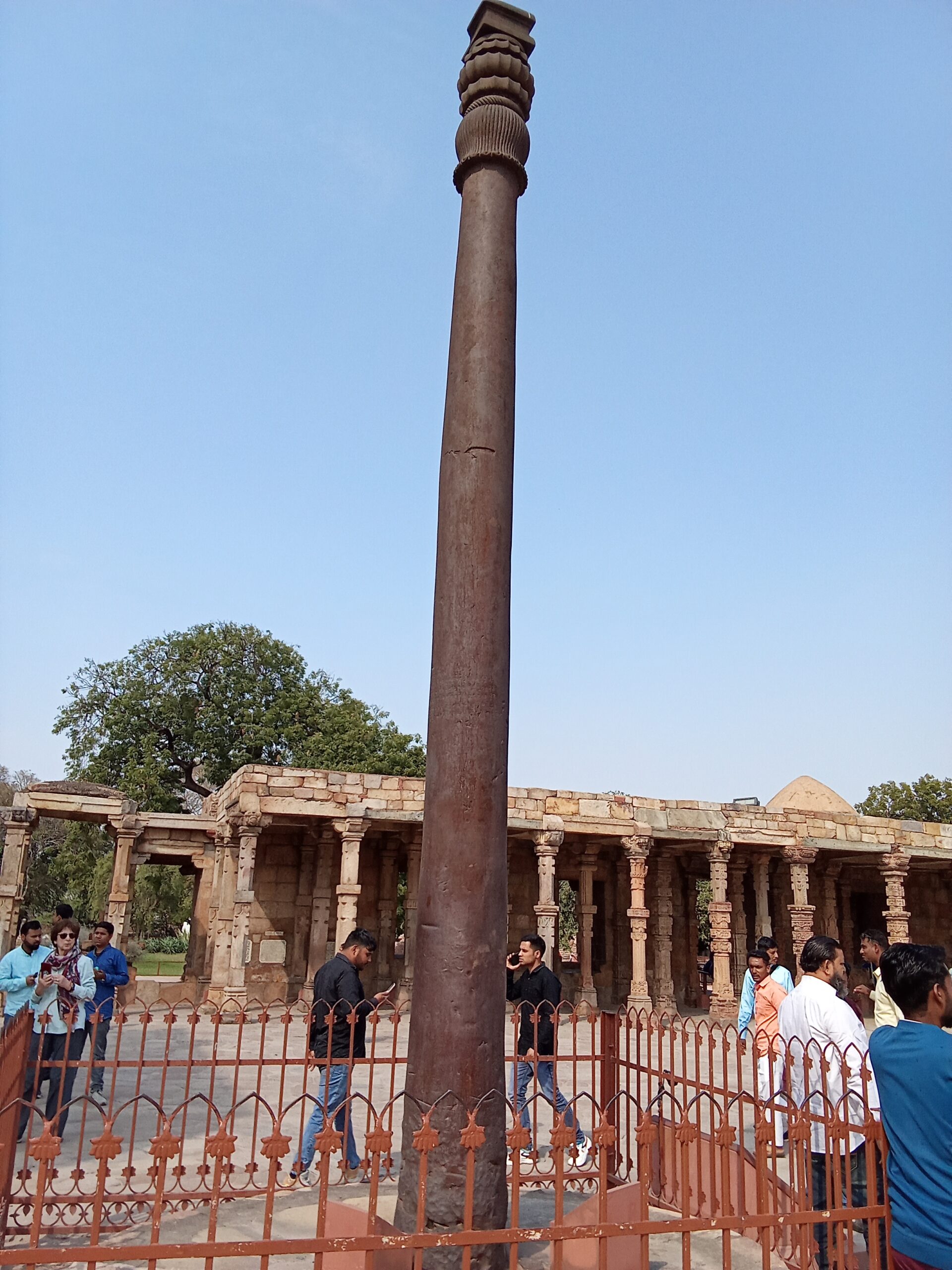In the Islamic ruins of Qutub Minar, on the outskirts of Delhi, India, there is said to be an iron pillar that hasn’t rusted for 1600 years. I read about this iron pillar in a book about India long ago. It stated that Indians explain it by saying it “houses the soul of a plant.” This time, I finally had the chance to visit India and see it with my own eyes.
What is the Iron Pillar of Delhi?
The Iron Pillar of Delhi is said to have been erected during the Gupta Dynasty in the 5th century. It is a mysterious iron pillar that, despite being exposed to the elements outdoors ever since, has not rusted. It was even considered an “out-of-place artifact” (OOPArt) for not rusting for 1600 years, but in 2003, a scientific explanation finally became possible. It was due to a protective film created by metallurgical techniques unique to that era, which differed from modern methods.
For a long time, people, unaware of this thin protective film, would touch the pillar hoping to receive its mysterious power. As a result, the film on the lower part of the pillar peeled off, causing it to start rusting. Therefore, it is now surrounded by an iron fence to prevent touching.
The Iron Pillar of Delhi continues to fascinate people from all ages and places due to its mysterious existence. Scientific analysis may progress, and the day may come when its mystery is fully unraveled. However, without losing its mystique, it will undoubtedly continue to inspire many people in the future.
Data
- Admission Fee: Foreigners 600 Indian Rupees (approx. 1100 JPY); Indians 50 Rupees (as of February 2024)
- Access: Subway recommended. Take the Delhi Metro Yellow Line and alight at Qutub Minar station. It’s a 20-minute walk from there.
- Caution: As it’s a tourist spot, auto-rickshaw touts and guides will approach you. Completely ignore them and avoid any conversation.
Qutub Minar
The Iron Pillar of Delhi is located within the Islamic ruins of Qutub Minar. This is a famous tourist destination in India, attracting more domestic tourists than foreign ones.

History and Features of Qutub Minar
- Construction: Began in the late 12th century by Qutb al-Din Aibak, who conquered Delhi. It was built alongside a mosque as a symbol of Islamic victory.
- Architectural Style: Characterized by a unique style that blends Hindu and Islamic architectural forms. It combines red sandstone and marble, adorned with beautiful carvings of geometric patterns and Arabic script.
- Height: At its completion, it was said to be over 100 meters tall, making it one of the tallest towers in the world. Its current height is approximately 72.5 meters. The diameter at its base is 14.3 meters.
- World Heritage Site: In 1993, it was inscribed as a UNESCO World Cultural Heritage site (Registered name: Qutb Minar and its Monuments, Delhi).

The surrounding stone ruins within Qutub Minar have an overwhelmingly greater presence than the Iron Pillar of Delhi itself. Can you grasp its immense size when compared to the people in the photo? Compared to the Taj Mahal, I think this is a tourist spot completely unknown to most Japanese people. If you have the chance to visit Delhi, it’s easy to get to, so why not give it a try?




